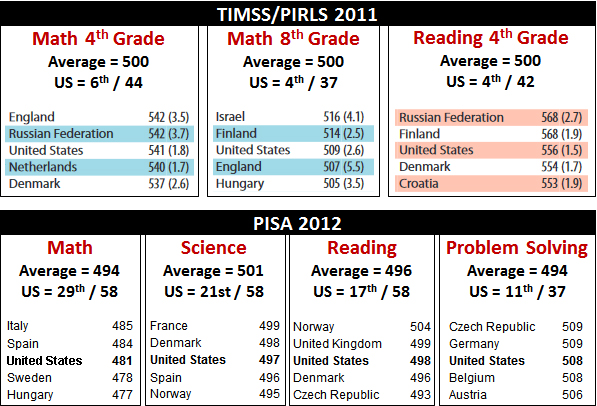Are American schools really 26th in the world, as Donald Trump says? Bob Somerby has been on this beat for a while, and says it ain’t so. So where do we rank?
Well, it depends on which test you believe. There are two big international tests of schoolkids: the TIMSS (math) / PIRLS (reading) tests, which have been in use since 1995; and the newer PISA tests, which have been in use since 2000. They give very different results. In theory, the TIMSS tests are more about straightforward problem solving, while the PISA tests are more conceptual. Whether that’s really true is a matter of opinion, as is the question of which test is “better.”
I won’t weigh in on that. However, as Somerby points out, one of the striking things about these tests is that a small clutch of Asian countries do far better than us. In fact, they do far better than everyone, something they accomplish through a combination of cherry picking the students who take the test and a monomaniac culture of test prep. So let’s take that as given, and just look at the rankings outside of the Asian tigers. Here’s the raw data from the most recent tests. Each box shows the average score, the US rank, and the two countries right above and below the US.
















